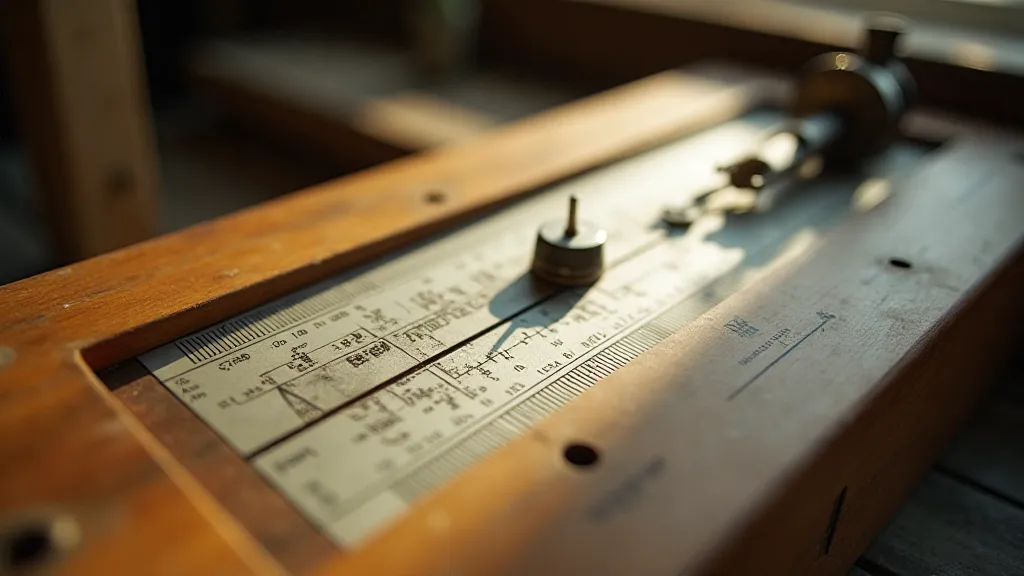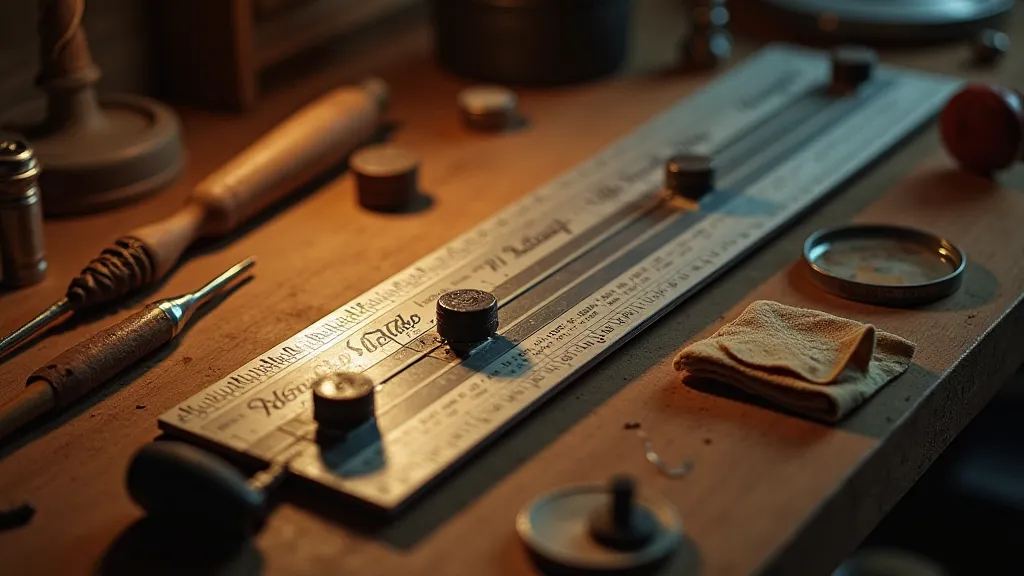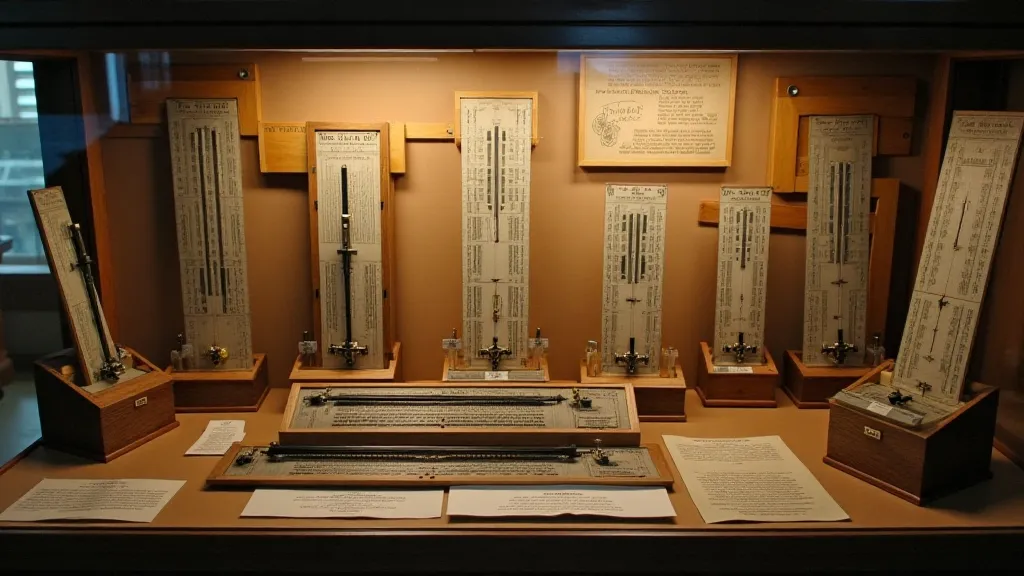The Scribe's Companion: How Slide Rules Fostered a Culture of Precision
There’s a quiet beauty to objects that carry history within their form. A worn leather-bound book, a chipped porcelain doll, a grandfather clock ticking with measured time - each whispers tales of lives lived and ingenuity employed. For those of us captivated by vintage engineering tools, few possess a charm and significance quite like the slide rule. These slim, wooden or plastic instruments weren’t merely calculators; they were the scribe’s companion, an extension of the engineer's mind, and a cornerstone of a culture deeply rooted in accuracy and meticulous attention to detail.
My own fascination began with my grandfather, a civil engineer who spent his entire career designing bridges and infrastructure. I remember him letting me hold his slide rule – a Pickett Model N3 – a weighty and reassuring presence in my young hands. He wouldn’t explain its workings, not explicitly, but he would demonstrate its use with quiet confidence, a slight smile playing on his lips as he effortlessly multiplied, divided, and calculated complex ratios. It wasn’t about speed; it was about *understanding*. The slide rule wasn't just a tool; it was a process. You couldn’t just punch in a number and get an answer. You had to think it through, comprehend the relationships, and appreciate the power of logarithms hidden within the scales.

Before the Digital Age: A Culture of Precision
Before personal computers and readily available calculators, the slide rule reigned supreme. From the early 20th century through the 1960s, it was an essential tool for engineers, architects, scientists, and even accountants. It wasn’t just a device for getting numbers; it fostered a culture of precision that permeated every aspect of design and calculation. Engineers weren't simply solving problems; they were cultivating a deep understanding of the underlying principles. The slide rule demanded a level of mental engagement that is largely absent in our digital era. A slight misread of a scale, a careless alignment – these errors had consequences, and that constant awareness pushed for carefulness.
Consider the Apollo missions. The calculations required to send humans to the moon and back were performed almost entirely with slide rules and mechanical calculators. Imagine the pressure, the responsibility! This wasn’t about a quick fix or a retry. The stakes were incredibly high, and the reliance on slide rules instilled a level of rigor and validation that’s rarely seen today. The engineers who worked on Apollo developed an almost spiritual connection to their tools, respecting their limitations and appreciating their capabilities. It's fascinating to consider how such complex feats of engineering were achieved with these relatively simple devices; an examination of the broader impact of slide rules on the birth of modern computing can be truly enlightening – read more about the measure of ingenuity. The act of manipulating these tools demanded a certain level of spatial reasoning and precision, a skill explored further in articles considering the cartographer's compass and its connection to spatial understanding.
The Craftsmanship of an Era
Beyond their functional purpose, vintage slide rules are objects of remarkable craftsmanship. Pickett, Faber, and Regula were the giants of the industry, and their instruments were built to last. The quality of the materials, the precision of the scales, the durability of the construction – it all speaks to a time when things were made to endure. Many slide rules still exist today, despite decades of use, a testament to the quality of their manufacture. The wood was carefully selected, often figured maple or walnut, and the scales were painstakingly engraved or printed. The metal cursor, used for reading the results, was often made of brass or aluminum, precisely machined to ensure accurate alignment.
Restoring a vintage slide rule isn't just about cleaning it up; it's about preserving a piece of history. It’s about honoring the skill of the original makers and appreciating the legacy of those who relied on these instruments to build our modern world. While complete restoration might involve re-lacquering a heavily worn body or replacing a damaged cursor, often the best approach is gentle cleaning and preservation, allowing the patina of age to remain, telling its own story.

More Than Just Calculations: Cultivating a Mindset
The slide rule wasn’t just a tool for getting a number; it was a training ground for a specific kind of mind. It fostered an appreciation for estimation, an ability to understand the magnitude of quantities, and a keen eye for detail. Learning to use a slide rule effectively required patience, practice, and a willingness to embrace failure. When a calculation went wrong, it wasn’t enough to just delete and retry. You had to figure out *why* it went wrong, and that process of critical self-assessment was invaluable. The need for meticulousness extended beyond mere accuracy; it fostered a deep respect for the materials and techniques involved in creating these instruments, and the broader understanding of how technology shapes our approach to problem-solving.
The reliance on manual calculation also encouraged a deeper understanding of mathematical principles. Students who learned to use slide rules often developed a more intuitive grasp of logarithms and exponents than those who simply relied on calculators. This fundamental understanding often translated into better problem-solving skills in other areas of engineering and science. The very act of engaging with these tools – feeling the weight, understanding the scale markings – created a unique sensory experience that fundamentally altered the relationship between the user and the underlying mathematical concepts. One could argue that this tactile connection contributed significantly to the democratization of engineering, enabling a wider range of individuals to participate in the design and creation of complex systems.
Collecting and Preservation: A Legacy to Safeguard
Today, vintage slide rules are prized by collectors and enthusiasts. The rarity of certain models, the condition of the scales, and the overall aesthetic appeal all contribute to their value. While some collectors focus on pristine, unblemished examples, others appreciate the character and history embodied in well-worn instruments. Owning a slide rule isn’t just about possessing an object; it’s about connecting with a tradition, honoring a legacy, and safeguarding a piece of engineering history. Considering the fragility of these objects, and the importance of preserving them for future generations, a look at fractured reflections, or the beauty found in broken tools, can offer valuable insights into the history and stories these instruments hold.
For those interested in collecting, researching specific brands and models is essential. Pickett slide rules, particularly the Model N3 and N4, are among the most sought-after. Faber and Regula also produced high-quality instruments, each with its own distinctive characteristics. Understanding the nuances of different models can significantly enhance the collecting experience. The materials used, the engraving techniques, the subtle variations in scale markings – all contribute to the unique character of each slide rule, making them far more than just simple calculating devices.

A Tangible Link to the Past
The slide rule is more than just a piece of engineering equipment; it’s a tangible link to a bygone era, an era defined by precision, meticulousness, and a deep appreciation for craftsmanship. While digital calculators have undoubtedly simplified many calculations, they can’t replicate the unique experience of using a slide rule – the feel of the scales under your fingers, the satisfaction of solving a problem manually, and the connection to a tradition that has shaped our world. It fostered a culture of precision and fostered a mindset that is unfortunately lacking in our increasingly digital world. Holding one in your hand is a quiet reminder of a time when understanding the principles was just as important as getting the answer. The legacy of the slide rule isn't merely about the calculations it enabled; it's about the values it embodied – a commitment to accuracy, a respect for craftsmanship, and a deep appreciation for the power of human ingenuity. These values resonate even today, reminding us of the importance of approaching challenges with thoughtfulness, precision, and a willingness to embrace the learning process.
Beyond its practical application, the slide rule stands as a testament to a time when technology fostered a deeper connection between humans and the underlying principles of science and engineering. It was an era where understanding wasn't merely about obtaining a result, but about grasping the 'why' behind it. This philosophy influenced design, manufacturing, and even the way problems were approached - ultimately shaping a culture of innovation and meticulousness that continues to inspire generations.





